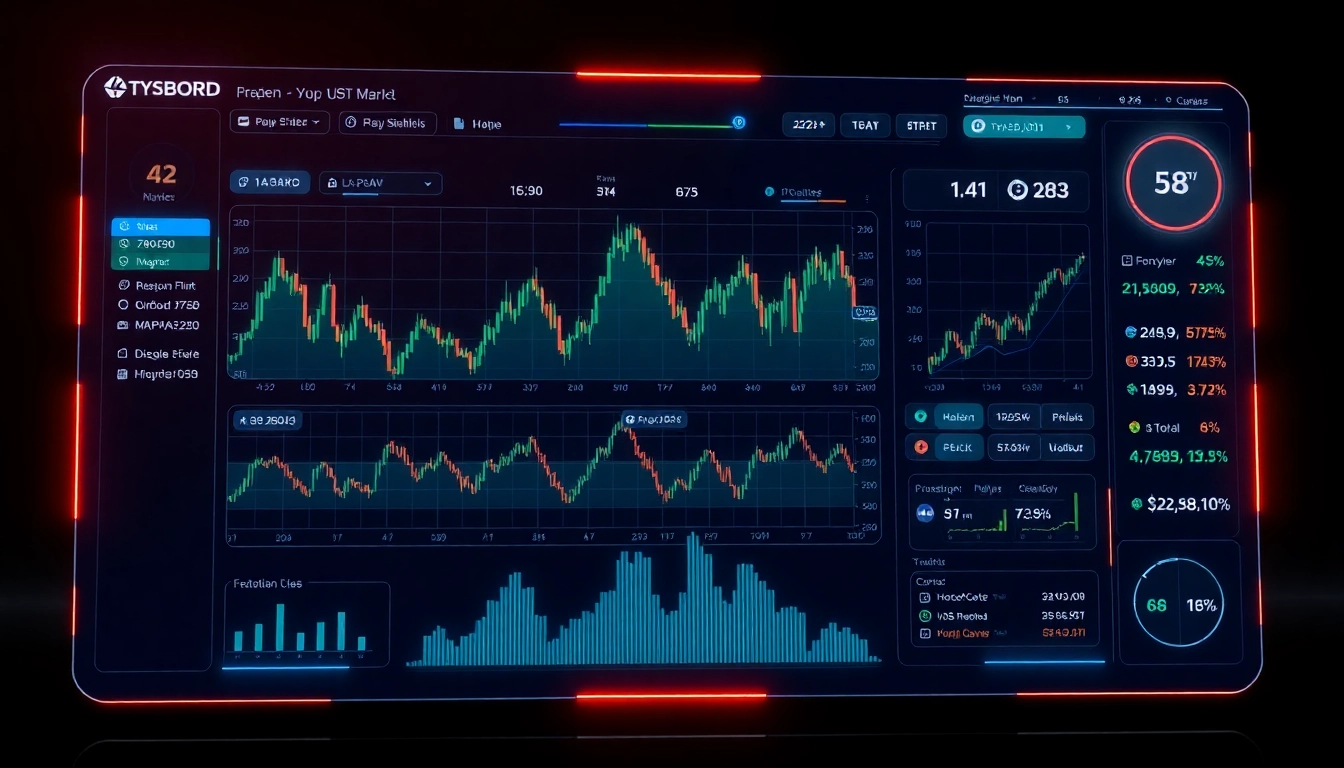What is Technology?
Defining Technology: A Comprehensive Overview
Technology is often described as technology, the science of applying knowledge for practical purposes. This definition encapsulates the vast scope of technology, from the simplest tools crafted by early humans to sophisticated systems enabling modern communication and automation. It involves various forms of practical knowledge and scientific understanding, allowing us to modify and exploit our environment to enhance human life.
In essence, technology encompasses the methods, systems, and devices that serve to solve problems and enhance capability. It is not merely confined to physical items like computers or machinery; it also includes processes, software, and services. Each technological advancement emerges from a blend of scientific understanding, engineering principles, and human ingenuity.
Types of Technology: Categories and Examples
Technology can be categorized into several distinct types, reflecting its diverse applications and methodologies. Here are some key categories:
- Information Technology (IT): Encompasses systems for gathering, processing, storing, and disseminating information. Examples include computer systems, networks, and software applications.
- Communication Technology: Involves technologies that facilitate communication, including telecommunication systems, internet platforms, and social media.
- Biotechnology: Applies biological systems and living organisms in technological applications, such as pharmaceuticals, agriculture, and genetic engineering.
- Artificial Intelligence (AI): Discusses technologies capable of performing tasks that typically require human intelligence, such as problem-solving, speech recognition, and pattern recognition.
- Green Technology: Focuses on sustainable practices and innovations that aim to improve the quality of the environment, including renewable energy sources and waste reduction technologies.
These categories represent just a fraction of the vast technological landscape, showcasing how technology intersects with different disciplines to solve complex challenges.
Historical Evolution of Technology
The historical evolution of technology is a narrative of human progress, innovation, and adaptation. Early human societies thrived through the development of rudimentary tools, with significant milestones including:
- The Stone Age, where tools made from stone marked the first instances of technology as humans devised instruments for hunting, farming, and crafting.
- The Bronze Age saw the development of metallurgy, which enabled the creation of stronger tools and weapons, significantly altering societal structures.
- The Industrial Revolution in the 18th century introduced mechanization, fundamentally transforming production processes and sparking urbanization and modern economies.
- The Information Age, characterized by the rise of computers, the internet, and digital communication, has developed a new platform for global interaction and information sharing.
Each era reflects humanity’s ingenuity in addressing its needs and challenges, laying the groundwork for the technology-driven society we live in today.
The Impact of Technology on Society
How Technology Shapes Daily Life
Technology has become interwoven into the fabric of daily life, with innovations impacting how we work, communicate, and even relax. From smartphones that provide instant access to information to home automation systems that enhance convenience, the influence of technology is profound.
Modern communication methods have drastically shifted social interactions; social media platforms enable people to connect globally, creating virtual communities that transcend geographical barriers. Furthermore, technology impacts education, with e-learning platforms making knowledge more accessible than ever before.
Technology’s Role in Economic Growth
The relationship between technology and economic growth is well-documented. By increasing productivity and creating new markets, technology acts as a significant driver for economic advancement. Innovations such as automation and AI enable businesses to operate more efficiently, reduce costs, and increase output, leading to economic expansion.
Moreover, technology fosters entrepreneurship, allowing startups to emerge and thrive in emerging fields like fintech, health tech, and edtech. Investment in technological development often correlates with increases in GDP, job creation, and improved living standards.
In conclusion, the economic impact of technology extends beyond mere financial metrics; it shapes workforce dynamics, after developing new skill sets and industries.
Ethical Considerations in Technology Use
The rapid advancement of technology raises ethical concerns that warrant examination. As tools evolve, so too do the dilemmas they present regarding privacy, surveillance, data security, and social equity.
For instance, the proliferation of data-driven technologies has sparked significant debate about user privacy. Companies collect vast amounts of personal information for targeted advertising and user profiling, raising ethical questions about consent and the protection of individual rights.
Furthermore, issues surrounding artificial intelligence—such as algorithmic bias and job displacement—challenge traditional ethical frameworks. A nuanced approach is necessary to navigate these complexities, balancing technological advancement with societal well-being.
Emerging Technologies
Artificial Intelligence: Trends and Implications
Artificial intelligence is at the forefront of modern technological advancements. From virtual assistants like Siri and Alexa to sophisticated algorithms that power self-driving cars, AI is reshaping industries and societal norms.
Trends in AI development indicate a move toward more autonomous systems capable of performing complex tasks without human intervention. This could revolutionize sectors including healthcare, finance, and transportation by improving efficiency, accuracy, and safety.
However, these advancements also bring implications. As AI systems become integral to business processes, workforce dynamics will change, necessitating new regulatory frameworks to address accountability, transparency, and ethical concerns.
Blockchain Technology: Beyond Cryptocurrency
Blockchain technology, originally designed to underpin digital currencies like Bitcoin, has evolved into a multifaceted tool with applications beyond finance. Its decentralized, secure, and transparent nature makes it suitable for various sectors, including supply chain management, healthcare, and voting systems.
This technology enhances trust and reduces fraud by providing a tamper-proof record of transactions accessible to all participants. As industries recognize its potential, initiatives are underway globally to explore blockchain’s role in increasing efficiency and transparency in numerous applications.
Green Technology: Innovations for Sustainability
With growing concerns over climate change and resource depletion, green technology has emerged as a vital sector aiming to promote sustainability. This field encompasses innovations designed to conserve energy, reduce emissions, and use resources more efficiently.
Examples include renewable energy technologies such as solar panels and wind turbines, which offer alternatives to fossil fuels. Additionally, advancements in energy storage and smart grid technology enhance the usability of renewable sources, paving the way for a more sustainable energy future.
Through a focus on sustainable practices, green technology not only addresses environmental challenges but also creates economic opportunities, positioning itself as a critical component of future development.
Challenges in Technology Adoption
Barriers to Technological Integration
Despite the clear benefits of technology, barriers persist that hinder its widespread adoption. Organizations may face challenges such as financial constraints, resistance to change, and a lack of expertise. These hurdles can prevent businesses from fully leveraging technological advancements.
To overcome these challenges, it’s essential for organizations to develop a comprehensive technology adoption strategy. This should include investing in training and resources, communicating the value of technology to employees, and aligning technological initiatives with organizational goals.
Cybersecurity Risks and Solutions
As reliance on technology grows, so too do the threats associated with cyberattacks. Data breaches, malware, and identity theft have become all too common, necessitating robust cybersecurity measures. Businesses must invest in comprehensive security protocols to protect sensitive information, including implementing firewalls, encryption, and regular audits.
A proactive approach to cybersecurity not only safeguards data but also builds trust with customers and stakeholders, reinforcing the necessity of protecting technological assets in our interconnected world.
Bridging the Digital Divide
The digital divide represents the gap between those who have access to technology and those who do not. This inequity can exacerbate social and economic disparities, leading to a cycle of disadvantage for underprivileged communities.
Efforts to bridge this divide involve increasing access to technology through policy initiatives, community programs, and educational resources. Governments, NGOs, and the private sector must collaborate to ensure equitable access and create opportunities for all individuals to benefit from technological advancements.
Future Trends in Technology
Predictions for Technological Advancements
Looking ahead, several trends are poised to shape the future of technology significantly. The continued evolution of AI and machine learning will enhance automation across many sectors, leading to greater efficiencies and innovative solutions.
The growing emphasis on data analytics will empower businesses to harness insights that drive informed decision-making. Simultaneously, advancements in quantum computing could revolutionize problem-solving capabilities, opening new frontiers in fields like cryptography and materials science.
The Role of Technology in a Post-Pandemic World
The COVID-19 pandemic accelerated tech adoption across various sectors, highlighting its role in maintaining continuity during crises. Practices such as remote work and telehealth became mainstream, illustrating technology’s adaptability and necessity.
As we transition into a post-pandemic era, organizations must embrace this shift by investing in robust digital infrastructure and creating hybrid working environments that merge in-person and virtual collaboration.
Preparing for a Technology-Driven Economy
As technology becomes more integral to economic structures, individuals and organizations must adapt to a rapidly changing landscape. Reskilling and upskilling will become paramount, enabling workers to thrive in an environment where technological competency is essential.
Furthermore, fostering innovation and entrepreneurship will be crucial in developing the next generation of technologies that drive economic growth. Creating supportive ecosystems that nurture startups and facilitate research will contribute to a thriving, technology-driven economy.




